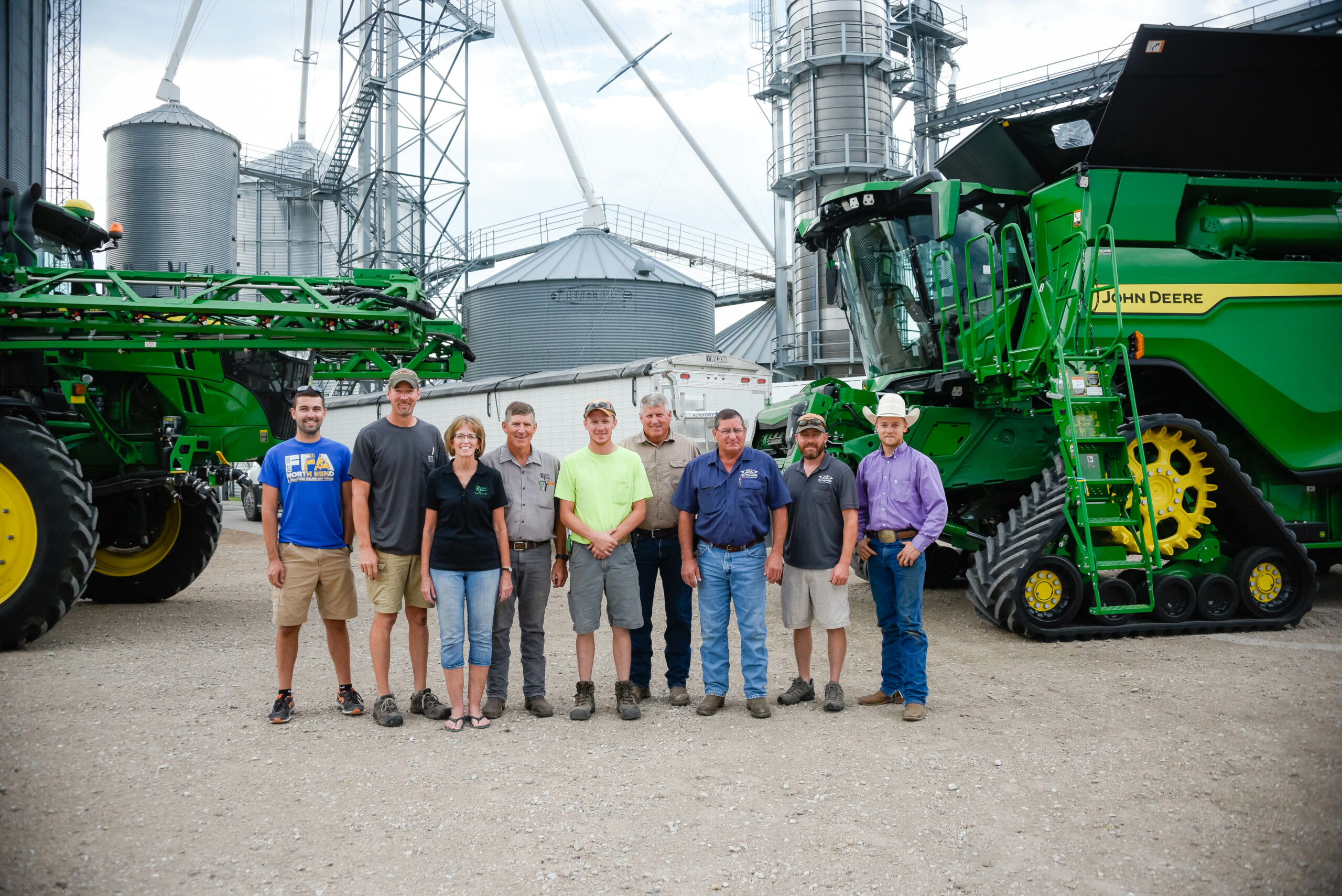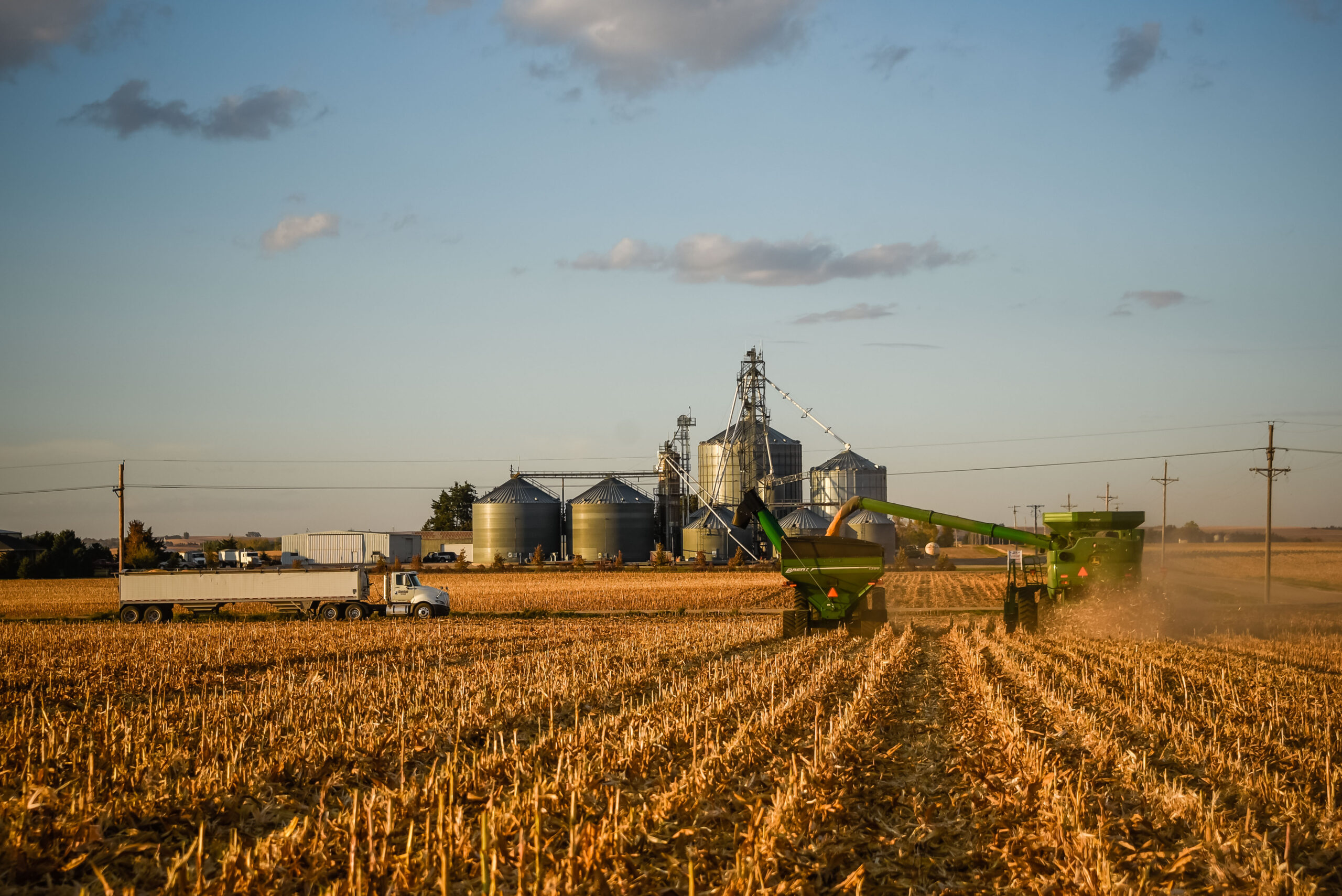

Over the past hundred years, the industry of farming has made incredible advancements in its methods, practices, and technologies, arguably more than in any other area of tech development. Certain beyond any doubt, however, is the influence and impact of agriculture has always been and continues to remain a significant factor of shaping the world we live in, and families who have farmed over the past century can attest to that.
One such family is the Reznicek clan of North Bend, Nebraska. Randy Reznicek, 63, can trace the family’s history in the area back to 1886, when at the age of nine, his great-grandfather arrived from Bohemia, now part of the modern-day Czech Republic. When it comes to bearing witness to technological advancements in ag, the experiences of Randy’s grandparents illustrate the striking changes well.
“I have pictures of both of my grandfathers farming with teams of horses,” Randy said. “They went from horses to tractors with cabs and air conditioning. It’s interesting to consider the changes and challenges they saw during their time farming.”
The agricultural evolution that improved efficiency and allowed for fewer operators on a greater number of acres led to a societal transformation causing a redistribution of family occupations. In short, large farming families began to shrink, and fewer siblings stayed home to farm.
“My grandpa was one of eleven children, but we’re the only farming operation left in the family today,” Reznicek noted.
Randy had the good fortune to grow up working on the farm alongside his parents, Dave and Patricia, and grandparents, Adolph and Emma. Randy has seen his fair share of changes, as well. In 1969 when Randy was 10, his parents opened a Polaris dealership on their farm to help diversify their income. By the time he graduated high school in 1978, that business had grown and started taking a lot of his father’s time away from farming. The Polaris dealership, P&R Sales, continues operations today from the home farm and continues to add diversity. When the dealership expanded and moved locations in 2010, Marty Reznicek, his wife Char, and their two sons, Nick and Nathan, stepped in to manage the business. As a result of the success of P&R Sales, many of the day-to-day farm operational decisions were passed on to Randy earlier than other similar generational transitions.
“Dad gave me the reins at a young age,” Randy said. “I was able to learn from my mistakes because he gave me a lot of responsibility.”


Randy’s younger brothers, Marty and Tim, joined the farming operation as it grew in the late 80s. Transitioning to a management role at a younger age has given Randy a broader historical perspective on the continued evolution of ag technology.
“Farming has changed so much,” he said. “When I was younger, we made many more passes in each field and spent more hours on a tractor. Every acre required more time back then. We walked each field of soybeans, sometimes more than once. Everyone was needed to help the farm run. We worked alongside neighbors, baling hay, shelling corn, constructing buildings, etc. People helped each other to keep the farms operating. Now with better farming practices, we might plant, put in a couple passes with the sprayer, then harvest. Of course, the difference is, we didn’t farm the number of acres back then that we do now.”
Today, Randy’s brother Tim continues to work beside him on the operation. Tim’s son, Paul, also joined the family business, as has Randy’s son-in-law, Justin Thiesen. Marty and Nick Reznicek, who operate P&R Sales, help on the farm after their regular business hours and during busy seasons. Randy’s wife, Julie, handles the books for the entire operation. It is truly a family business.

The Rezniceks continue to upgrade technology and refine their farming practices. Specifically, the way the operation treats soil is the most significant change that has come over the past couple of decades. They noticed the huge amount of variability in production from field to field and wanted to determine the causes of that variation.
“When you’re out in the field, and you see differences, you want to know why this crop is doing better in this area versus another, or why is standability better over here versus over there,” Randy said. “I was always curious about it and trying to learn more.”
Back in the mid-90s, the tools to start answering those questions emerged, and they pushed for the early adoption of variable rate fertility and yield mapping technology. Today, the whole farm is on a rotation where each field is sampled on 2.5-acre grids every four years. They look closely at micronutrients in addition to the traditional macronutrients of nitrogen, phosphorus, and potassium.
“In the last 10 years, we have been focusing more on balance,” Randy said. “It’s a longer-term process and challenging to get your fertility in balance, getting base saturations corrected, and micros in line. It takes time and money.”
As their focus has changed with fertility, so have application methods and tillage practices. The 2022 season was extremely dry in northeastern Nebraska, likely the driest it’s been in Randy’s entire farming career. Back when he was getting his start, every field was turned completely black every year. Now, they run a mixture of conventional, strip-till, and no-till depending on the crop planted next and the soil types within individual fields. This shift to reduced tillage has allowed them to reap the benefits of increased soil moisture while giving the option to incorporate fertility closer to the seed zone.
“When we started sampling, we had very low organic matter levels, and I’m sure it’s from all the tillage practices from the way we used to operate,” Randy said. “I realize hybrids and practices have also changed, but back in the 70s, we would have done a lot of tillage before planting in a dry year like this one. I think the change in farming practices and applying fertility for soil balance has made a significant difference.”
The Rezniceks have another invaluable tool they can use when making fertility and other applications, especially in a dry season – the pivot. Nearly 75 percent of the farm’s acres are irrigated, these systems allow them to provide much-needed moisture while spoon-feeding nitrogen and other micronutrients throughout the season. Although he’s grateful to have these tools, they are costly and require a lot of extra management.
“It’s not as easy as pushing a button and having water,” Randy said. “It’s a lot to coordinate the right irrigation timing and applications. We do a lot of fertigation and chemigation. For each pivot that’s able to, we normally make two fertigation passes, two fungicide passes, and an insecticide pass.”
Despite the added workload and associated costs, the benefits of application flexibility and nutrient efficiency make it worth it, especially with nitrogen management. On any farm, nitrogen is one of the largest expenses. By split-applying and spoon-feeding throughout the season, it’s critical to make those fertility dollars go as far as possible, no matter the weather conditions.
“We’ve gone through some wet years and worried about losses,” he said. “Now, with the costs being close to $1 a pound or more, you want to make sure every pound counts.”
In his quest to learn more about better managing his acres, Randy regularly tunes in to Ag PhD Radio on SiriusXM 147, plus he makes sure to attend as many Ag PhD events as he can.
“I’ve listened to a tremendous amount of podcasts, trying to learn more about soils and fertility,” he said. “I’ve enjoyed listening to Brian and Darren, and I was fortunate enough to meet Neal Kinsey several years ago and attend his sessions, and that’s been eye-opening. Since they’ve had Neal in Baltic, I haven’t missed one of his three-day sessions.”

With a hyper-focus on improving efficiency, the Reznicek Farm continues fine-tuning its fertility. However, when it comes to determining chemical application strategies in a realm where choices are constantly evolving and application environments regularly vary, Randy enlists the help of Jared Steffensmeier and others from Hefty Seed in West Point.
“This chemical thing is complicated,” he said. “When Roundup first came out, it was easy. You killed everything, and you didn’t worry about it. As resistance grew, we had to adapt, and with the complexity of the chemicals, expertise is needed. No-till makes it even harder to know what products will get the job done. Hefty is on top of that, and they’ll lead you down the right road to get the best deal. The last year has been challenging with availability and pricing, but we’re always confident that they’ll have the products we need.”
As Rezniceks look ahead to handing the baton off to the next generation, he reflects on the importance of continuing to adapt and be agile. Taking advantage of new developments in fertility, crop protection, equipment, and more is a priority.
“You have to be dedicated and adapt to change,” he said. “The new technology is great, and it’s evolving rapidly. It’s our job as caretakers of this ground to leave it in better shape than when we got it. We’re only here for a short time, but we need to work to make things better for future generations.”
